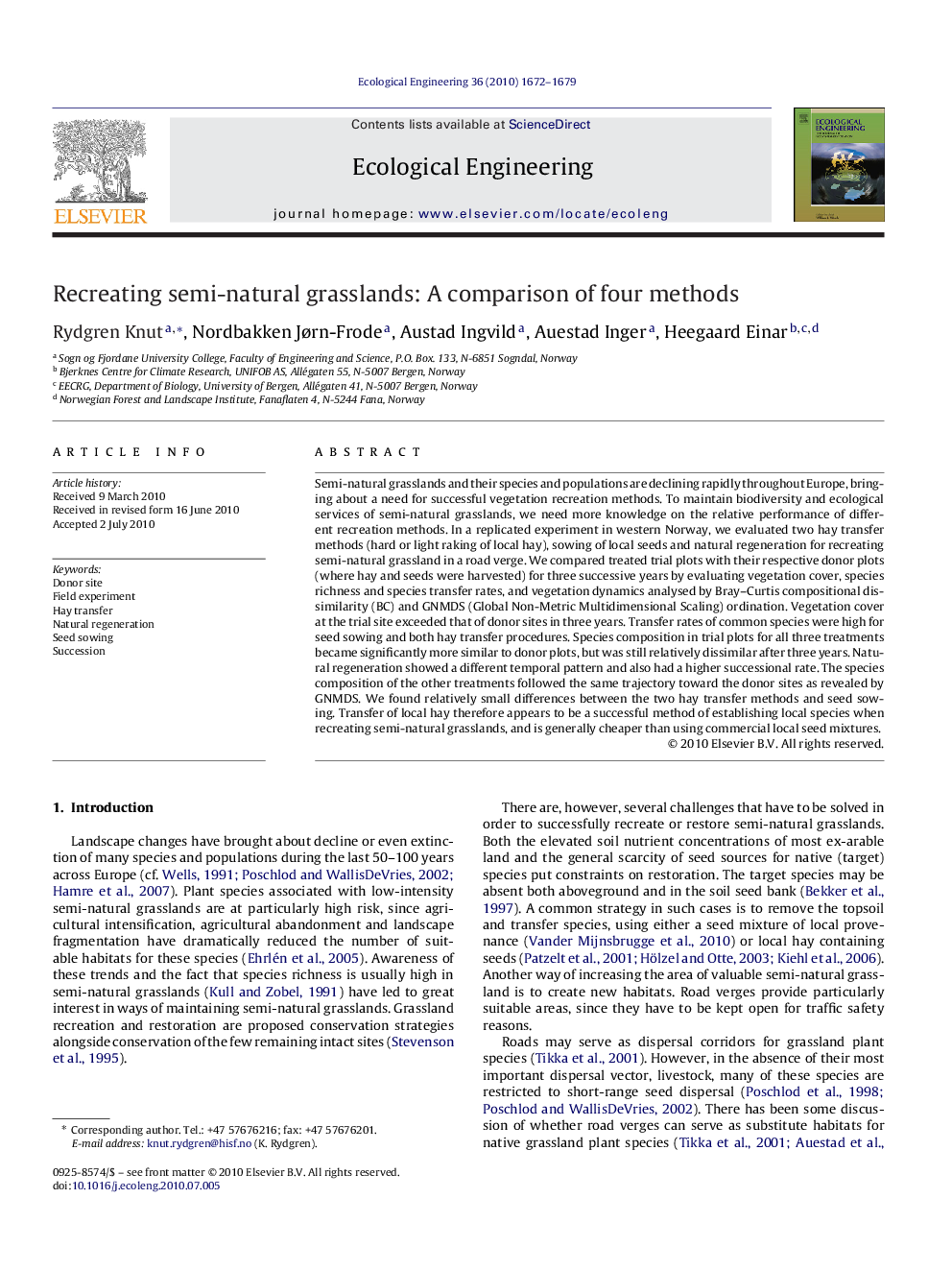| Article ID | Journal | Published Year | Pages | File Type |
|---|---|---|---|---|
| 4390478 | Ecological Engineering | 2010 | 8 Pages |
Abstract
Semi-natural grasslands and their species and populations are declining rapidly throughout Europe, bringing about a need for successful vegetation recreation methods. To maintain biodiversity and ecological services of semi-natural grasslands, we need more knowledge on the relative performance of different recreation methods. In a replicated experiment in western Norway, we evaluated two hay transfer methods (hard or light raking of local hay), sowing of local seeds and natural regeneration for recreating semi-natural grassland in a road verge. We compared treated trial plots with their respective donor plots (where hay and seeds were harvested) for three successive years by evaluating vegetation cover, species richness and species transfer rates, and vegetation dynamics analysed by Bray-Curtis compositional dissimilarity (BC) and GNMDS (Global Non-Metric Multidimensional Scaling) ordination. Vegetation cover at the trial site exceeded that of donor sites in three years. Transfer rates of common species were high for seed sowing and both hay transfer procedures. Species composition in trial plots for all three treatments became significantly more similar to donor plots, but was still relatively dissimilar after three years. Natural regeneration showed a different temporal pattern and also had a higher successional rate. The species composition of the other treatments followed the same trajectory toward the donor sites as revealed by GNMDS. We found relatively small differences between the two hay transfer methods and seed sowing. Transfer of local hay therefore appears to be a successful method of establishing local species when recreating semi-natural grasslands, and is generally cheaper than using commercial local seed mixtures.
Related Topics
Life Sciences
Agricultural and Biological Sciences
Ecology, Evolution, Behavior and Systematics
Authors
Rydgren Knut, Nordbakken Jørn-Frode, Austad Ingvild, Auestad Inger, Heegaard Einar,
